Climate Solutions

➡️ Climate Change Solutions – Reducing Emissions and the Energy Transition
Addressing the climate crisis requires a multifaceted approach that involves cooperation from individuals, governments, and businesses worldwide. The scale of these changes will determine the success of limiting warming and mitigating the worst of climate change - through technological, economic, natural and political solutions.
Everyone can help limit climate change. From the way we travel to the electricity we use and the food we eat, we can make a difference. However, for real, lasting global change to occur, it needs to come from the top.
Jump straight to our resources on ➡️ the Solutions to Climate Change
Explore our comprehensive guides on -
- Renewable Energy
- Ending Coal and Fossil Fuels
- Nature-based solutions
- Climate Adaptation and Resilience
- Climate Litigation
- Climate Law and Legislation
-
Carbon Capture and Carbon Offset
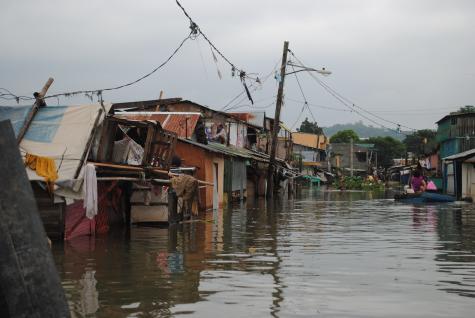
Just How Bad is Climate Change?
- In 2021, after years of climate modelling, the IPCC officially declared that the climate changes we are witnessing today are unequivocally driven by human influence.
- CO2 in the atmosphere has reached its highest level in the last 2 million years. Pre-industrial CO2 levels were around 280 parts per million (ppm). Today, we stand at 420 ppm.
- The hottest year on record was 2024. This year's average global temperature was 1.28 °C warmer than the 20th-century average.
- Deforestation now accounts for 20% of all global greenhouse gas emissions caused by humans.
- There are 3.6 billion people living in areas of high vulnerability to climate change impacts such as droughts, floods, heat waves, extreme weather events, and sea-level rise.
- Between 2008 and 2016, an annual average of 21.5 million people were forcibly displaced each year by weather-related events.
-
Under current projections, crop yields from maise are projected to decline by 24% by 2030.
- The global cost of climate change damage is estimated to be between $1.7 trillion and $3.1 trillion annually by 2050
-
195 countries have ratified the 2015 Paris Agreement, committing to limiting global warming and adapting to climate change. However, with the world off track to meet even one of the goals by 2030, it is failing disastrously.
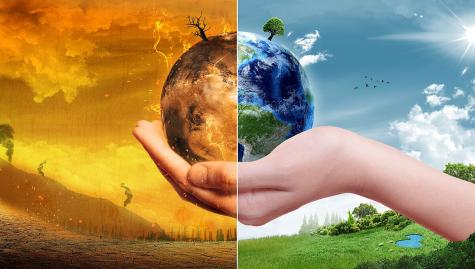
Can We Reverse Global Warming?
Global warming is reversible, partially. We can slow the rate of change and limit global warming by reducing human emissions of greenhouse gases. However, without major global action, temperatures are on track to rise by 2.5-4.5 °C by 2100.
Even if all human emissions of heat-trapping gases stopped today, temperatures would continue to rise for a few decades. Excess heat stored deep in the ocean would continue to rise to the surface. Once this excess heat has radiated out to space, temperatures will stabilise. Other climate-induced changes, however, would continue for centuries. Sea level rise, for example, would take millennia to reverse its current course.
Climate change could end up costing us 11-14% of global GDP by the middle of the century. Continuing with high emissions would mean an 18% loss, while staying below 2°C would be significantly less, but still a cost of 4%.
The estimated cost of serious climate action that would limit the worst effects of climate change is between $300 billion and $50 trillion over the next two decades.
The cost of inaction is so much higher.
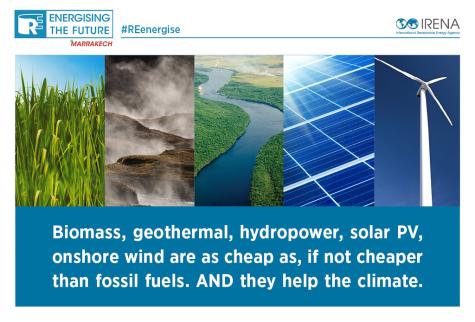
What Are The Solutions to Climate Change?
TRANSITION TO RENEWABLE ENERGY
Shifting from fossil fuels to renewable energy sources such as solar, wind, and hydroelectric power significantly reduces greenhouse gas emissions. Funding for the renewable sector, including research, technology, infrastructure, and grid adaptation, is essential. Sharing this knowledge of new technological advancements between countries will help speed up the transition, particularly in developing nations.
The switch to cleaner renewable energy sources to limit our greenhouse gas emissions will only be successful alongside a phaseout of fossil fuels. Large-scale divestment from oil, gas, and coal industries is needed, and we simply must end enormous government subsidies that prop up the industry and prevent a fast and just renewable transition.
IMPROVED ENERGY EFFICIENCY
By optimising the way we use energy, particularly in carbon-heavy industries, we can significantly reduce greenhouse gas emissions and save money. Energy efficiency also supports the transition to renewable energy sources by reducing overall demand, making it easier to meet energy needs with clean alternatives.
In residential and commercial buildings, upgrading insulation, installing energy-efficient windows, and utilising smart thermostats can drastically cut energy consumption. Modernising equipment, reducing heat loss, and streamlining processes to improve productivity in the industrial sector all helps to reduce emissions.
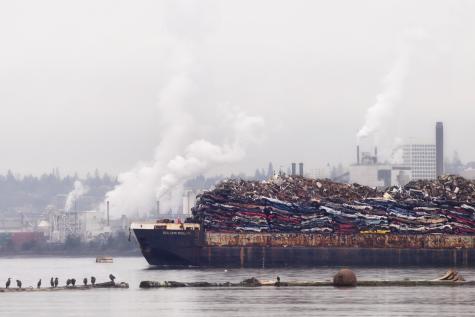
SUSTAINABLE TRANSPORTATION
Short-haul and domestic flights are the most carbon-intensive form of transportation. Cars follow as a close second. The growing popularity of short breaks and personal car ownership have increased our carbon footprints exponentially.
This trend has been worsened by inadequate and expensive public transport options, which have been paralysed by under-investment and the lure of capitalism. Promoting public transportation, electric vehicles, and non-motorised transport options like cycling can decrease our reliance on fossil fuels. Numerous governments have taken up policies to ban new petrol and diesel-powered cars and vans, as well as bans on SUVs and the advertisement of airlines and gas-guzzling cars.
The shipping industry is responsible for more than 18% of nitrogen oxide pollution and 3% of greenhouse gas emissions, the cleaning up of this industry is also imperative to any climate action plan.

REFORESTATION AND AFFORESTATION
As natural carbon sponges, trees play a huge role in our planet's ability to absorb excess carbon. While we are working towards a fossil fuel phaseout, forests are helping to regulate our planet's temperature. Large-scale tree planting and forest restoration are important parts of our strategy to help stabilise ecosystems and levels of carbon dioxide in the atmosphere.
Tropical forests are the most effective at storing carbon, providing at least a third of the mitigation action needed to prevent the worst climate change scenarios. Despite this, nature-based solutions receive only 3% of all climate funding. Conserving ecosystems is often far more cost-effective than human-made interventions such as carbon capture.
SUSTAINABLE AGRICULTURE
Industrial agricultural practices that have now become commonplace are completely unsustainable. Animal agriculture alone is responsible for producing between 14-18% of total greenhouse gas emissions. Accounting for 83% of agricultural land, animal farming is the leading cause of rainforest deforestation. Cattle ranching in the Amazon is responsible for 80% of rainforest loss, our biggest natural defence against climate change. Bottom trawling in the fishing industry produces the same amount of emissions as the entire aviation industry.
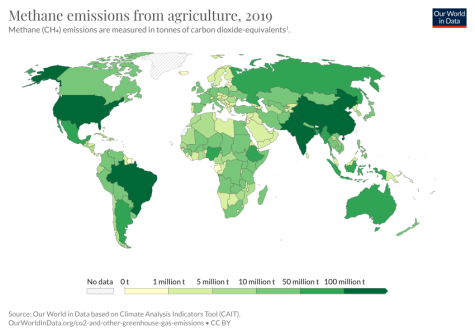
Implementing practices like organic farming, adapting our diets, strict bans on unstainable fishing practices, crop rotation, monitoring of illegal logging and livestock ranches, reducing fertiliser usage, minimising tillage, management of soil health, and improving manure management all go a long way to reducing the carbon emissions output of our food systems.
WASTE REDUCTION AND RECYCLING
Minimising industrial and residential waste is an important part of climate change mitigation. The less waste that goes to landfills, the fewer emissions are created. Roughly 6-8% of human-caused greenhouse gas emissions could be reduced if we stop wasting food alone.
Our consumption is a primary driver of our climate emissions. The most effective way to reduce waste, is to not create it in the first place. Nearly half of our global greenhouse gas emissions come from extracting and processing materials, fuels, and food.
Zero waste is one of the fastest, easiest, cost-effective, and readily available solutions to the climate crisis. It helps us buy time as we put in place large-scale changes to our energy, industry, and transport systems.
The more we buy and dispose of things, the more energy we use and the more emissions we create. By reducing our demand for new products, we can save money, conserve natural resources, and reduce greenhouse gas emissions.
Recycling, although an excellent idea in theory, should be a last-case scenario as it still requires an enormous amount of energy to transport, sort, clean, and process. Additionally, many recycling programmes are often a greenwashed mirage, as in many cases, recycled items still end up in landfill.
Lack of standardisation in packaging and established standards for labelling make many recycling claims false. Of course recycling matters, but reducing our consumption should always be the first option.

CARBON PRICING
Putting a price on carbon has proved to be one of the most effective economic tools for meeting the goals set out in the Paris Agreement. In 2023, carbon pricing revenues reached a record $104 billion. A study by the IMF estimated that pricing fossil fuels would lower global carbon emissions by 28%. The polluter pays principle ensures that the burden of climate damages falls on those most responsible for it.
Emissions trading systems (ETS) cap greenhouse gas emissions and allows those with low emissions to sell their allowances to larger emitters. Carbon taxes directly put a price on carbon by defining a tax rate on emissions. Both incentivise businesses to lower their emissions or continue, but pay for it.
Currently, 40 countries have put in place carbon pricing initiatives, alongside 20 cities. Evidence suggests that these types of mechanisms are effective. A study in Sweden revealed that carbon taxation reduced emissions in the transport sector by 11% on average between 1990 and 2005.
Not only does it force companies to comply with emission reduction, but it also drives investment into cleaner, more renewable options for energy, transport, and industry.
POLICY AND REGULATION
High-level governmental action is needed to implement and enforce policies limiting emissions, protecting natural resources, and promoting sustainable practices. The most effective strategies have included carbon taxing as mentioned above. Climate policies are more effective as part of an integrated approach. In recent studies it was found that policies applied alone had minimal impact.
The Green New Deal was a large-scale programme proposed in the U.S. to decarbonise the economy and bring about systematic changes to employment, transport, energy, and healthcare. Although it failed to advance in the Senate, it gained massive public support, and some of the policies have been replicated by other countries that have implemented their own versions. There are calls for a global Green New Deal to unite and coordinate these campaigns into a broader global framework.
A landmark study which evaluated 1,500 climate policy measures around the world discovered that an alarming 96% of climate policies since 1998 have failed. Success always relied on the use of tax or price incentives.
PUBLIC AWARENESS AND EDUCATION
An informed and engaged public can take steps to reduce their own carbon footprint, better manage their own risk of climate-induced events, and put pressure on governments to start taking meaningful climate action. Climate education drives sustainable communities and collective action.
Climate change awareness is essential to public support for mitigation and adaptation policies. The education of young people is especially important as they face mounting challenges in a changing future. Everyone can and should play a part by raising their voice, sharing solutions, and advocating for change.

CARBON CAPTURE
Investing in research and developing new technologies can provide innovative solutions to reduce emissions and adapt to climate impacts. Unfortunately, expensive high-technology strategies such as carbon capture make only false promises that convince us it is safe to continue burning fossil fuels if we capture the carbon and store it in the ground. This is simply not true.
Carbon sequestration is an expensive distraction that allows polluters to continue unabated. It is used by industries like airlines and Big Oil to greenwash and deceive the public.
Capture and storage schemes, despite their technology being in its infancy, have been adopted by many countries in their net zero plans. However, studies have found that the majority of carbon capture projects are seriously underperforming or failing completely. Issues with suitable storage, which will need monitoring for centuries, and the sheer expense make carbon capture a controversial solution and a distraction from renewable energy funding.
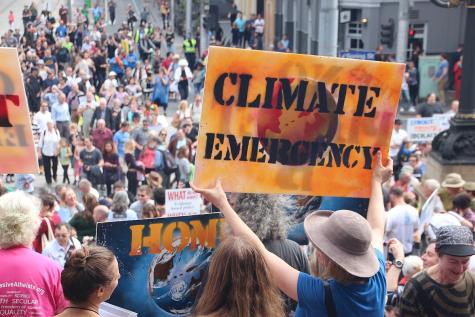
Climate Change Solutions for a Better World
The rate of growth of greenhouse gas emissions has slowed. Renewable energy costs are falling. New policies and laws have increased energy efficiency, and levels of deforestation have stabilised. There are reasons for hope, and we already have the necessary tools and knowledge to be able to avoid worst-case scenarios of climate change.
To fully utilise these tools and solutions, governments and world leaders need to step up and enforce large-scale implementation. Public pressure must continue to push governments to act sooner rather than later. We are failing all of our climate targets, and there is still no legal requirement to reach them.
We simply must end our reliance on coal and fossil fuels, commit to a renewable energy future, reforest, rewild, de-intensify agricultural practices, embrace Indigenous knowledge, build resilience, repay our climate debts, share the skills and technology needed for a fast energy transition, and strictly monitor and enforce emissions targets.
"The world is reaching the tipping point beyond which climate change may become irreversible. If this happens, we risk denying present and future generations the right to a healthy and sustainable planet – the whole of humanity stands to lose" - Kofi Annan
Author: Rachael Mellor, 31.03.25 licensed under CC BY-NC-ND 4.0
For more information on the Solutions to Climate Change see below ⬇️
Info on Climate Solutions
- Fund Renewable Energy[65]
- End coal & fossil fuels[436]
- Funding & Tax[177]
- Nature based solutions[224]
- Behaviour & society change[99]
- Climate Policy[282]
- Reduce energy waste[50]
- Sustainable choices[34]
- Climate Adaptation & Resilience[221]
- Legal challenges[316]
- Reports and case studies[162]
- High Tech (and risk?)[171]
- Population Control[57]
- Methane Reduction[51]
- Carbon Offset[150]
- Our Links